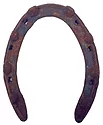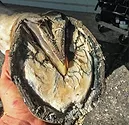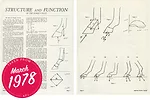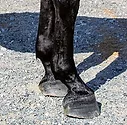Advertise Follow Us
American Farriers Journal

View Archived Issues
September/October 2017
Volume: 43
Edition: 6
American Farriers Journal is the “hands-on” magazine for professional farriers, equine veterinarians and horse care product and service buyers.
-
Table Of Contents
Table Of Contents
Reinforcing the Basics of Horseshoeing
In his fifth decade of shoeing, Bob Pethick still holds true to the principles that have helped him manage horses’ feetRead MoreMigrating Clients Require Farrier Communication And Collaboration
As seasons change and horses move between locations, farriers in different states must work together to keep horse hooves healthyRead More“Diplomatic Skills” Needed When Stumbling is Due to Rider Error
It’s never easy to tell one of your clients to lose 150 pounds, buy a new horse with better conformation or to sign up for riding lessonsRead MoreFrom The AFJ Archives: September/October 2017
March 1978 — “Structure And Function Of The Horse’s Foot”Read MoreThe Cost of Treating Laminitis
A veterinarian and three farriers discuss the cost of treatment and how it affects their approach to helping the horseRead MoreRemembering Bob Peacock
Friends and admirers recall what the Hall Of Fame farrier meant to the industry and their livesRead MoreOld Horses, New Problems
Aging horses become more susceptible to arthritis, laminitis and other issues that present hoof-care challengesRead MoreSix Reasons for Poor Hoof Quality
Equine vet Scott Morrison examines causes of compromised hornRead MoreLessen Inflammation’s Effect On Joint Health
Farriers’ early recognition can help slow the degeneration of the conditionRead MoreDon’t Stop Developing Your Skill Set
Reaching your goals for improvement requires commitment to practice and recognizing where your greatest needs restRead MoreStraight Bar Shoe Delivers New Challenge
For this year’s Summit Mail-In Exercise, the goal is to test your skills with a practical shoe with applications for any footcare practiceRead MoreHow Uneven Feet Affect Locomotion
Understanding the relationship between movement and injury is keyRead MoreManaging Conformational Faults: A Farrier’s Approach
Understanding deviations and their role in load distribution are criticalRead MoreEquine Massage Therapists Successfully Challenge Veterinary Practice Acts
Attorney advises farriers to examine laws in the states they practice inRead MoreResearch Journal: September/October 2017
The information, ideas and opinions expressed are those of the author and do not necessarily represent those of the United States Department of Agriculture.Read More -
Featured Articles
Featured Articles
Reinforcing the Basics of Horseshoeing
In his fifth decade of shoeing, Bob Pethick still holds true to the principles that have helped him manage horses’ feetRead MoreThe Cost of Treating Laminitis
A veterinarian and three farriers discuss the cost of treatment and how it affects their approach to helping the horseRead More - Digital Edition
-
Online Extras
Online Extras


























